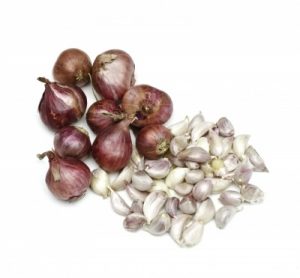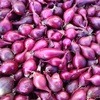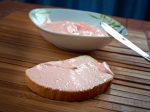
Having just harvested my crop of Autumn sown onions, I was admiring the way in which they seem to have packed all their flavour and goodness into their yellow or red bulbs. The onion remains a base for much of the savoury culinary arts, from curry to a garnish on burgers. Without them, our taste experiences would be all the poorer and I can’t think of a more versatile vegetable.
Before I tackle more weighty issues, my favourite variety is a red onion called ‘Electric’ which actually stores reasonably well. I have grown some Japanese yellow varieties which provide the basis for our household’s Autumn and Early Winter stock but I never keep them long enough to see us through the Winter. Whilst this isn’t about garlic, I have grown now most varieties and after harvesting in September, they are still going strong.
Health Benefits Of Onions
Looking at the literature around onions, they also have some useful benefits besides the obvious ones of their pungent taste and distinctive visual appearance, whether chopped, as a ring or just simply whole. There has been interest since antiquity in its properties and its oil appears to have some properties worth developing. It exhibits dose-dependent inhibition of induced tumours upto 10,000 micrograms, applied three times a week (Belman, 1983). It doesn’t have a spectacular score in terms of its antioxidant capacity according to a league table in Cao et al., (1996) although there may be varietal differences. A value of 40 was given for dealing with peroxyl radicals in µmol Trolox equivs./g dry matter using their ORAC method. A recent survey characterised a number of important compounds including its fibre content which is high in peel (Benitez et al., 2011a). The flavonoid content is high – mainly anthocyanins in red onions and in all, mostly flavonols, which impart the yellow-golden colour. Quercetin is the key flavonol here (Downes et al., 2010).
More value can be extracted from the vast amount of wastes produced as a result of this major crop. A very important article appeared recently discussing technologies for stabilising onion waste before further processing using sterilisation (Benitez et al., 2011b).
Consumption of Onions And The Potential For Reducing Risk Of Cancer

Consumption of allium is inversely related to a number of different cancer types such as stomach, prostate and colorectal (Ernst, 2000; Izzo et al., 2004). Collaborative research conducted between the National Cancer Institute and the Chinese found that stomach cancer rates dropped with regular consumption of onion or garlic (You et al., 1989). Their statistics showed that the risk of stomach cancer was 40% lower in the top 25% of onion consumers compared to those in the lowest quartile for consumption. Other countries show similar lowered mortality levels , even identifying a specific variety which I’ve not yet come across – Vidalia. A Greek study also reported similar findings and a study in middle-aged Dutch men and women demonstrated that cancer rates was 50% lower when at least half an onion was consumed compared to eating no onions at all (Dorant et al., 1996).
Onion Varieties To Grow

If you are keen to know more about growing onions properly then take a look at our main article on the subject. We offer lots of gardening advice and a more extensive list of varieties to try at home.
Please note this page contains links to our affiliate marketing partner. Please read our affiliate disclosure.
The most popular over-wintering variety to grow is ‘Radar‘ which produces excellent yields with fair sized bulbs and one which I regularly sow around October.

One reliable variety which I leave for planting until February is ‘Sturon‘.

The variety ‘Red Baron’ is straightforward to grow and sets are best planted between mid-February and April. I have tried overwintering these with an October sowing of sets and these will produce good sized bulbs much earlier.
References
Belman, S. (1983) Onion and Garlic Oils Inhibit Tumor Promotion. Carcinogenesis 4 (8) pp. 1063-1065
Benitez, V., Molla, E., Martin-Cabrejas, M.M., Aguilera, Y. Lopez-Andre, F.J., Cools, K. Terry, L.A., Esteban, R.M. (2011a) Characterization of Industrial Onion Wastes (Allium cepa L.): Dietary Fibre and Bioactive Compounds. Plant Foods for Human Nutr. 66 (1) pp. 48-57
Benitez V., Molla E., Martin-Cabrejas M.A., Aguilera Y., Lopez-Andreu F.J., Esteban R.M. (2011b) Effect of sterilisation on dietary fibre and physicochemical properties of onion by-products
Food Chem., 127 (2), pp. 501-507.
Cao, G, Sofic, E, Prior, R.L. (1996) Antioxidant capacity of tea and common vegetables. J. Agric. Food Chem. 44 pp. 3426–3431.
Dorant, E., van den Brandt, P.A., Goldbohm, RA, et al. (1996) Consumption of onions and a reduced risk of stomach carcinoma. Gastroenterology 110 pp.12–20.
Downes K, Chope GA, Terry LA (2010) Postharvest application of ethylene and 1-methylcyclopropene either before or after curing affects onion (Allium cepa L.) bulb quality during long term cold storage. Postharvest Biol. Technol. 55 pp. 36–44
Ernst, E. The role of complementary and alternative medicine in cancer (2000) Lancet Oncol. 1 pp.176 –80.
Izzo, A.A., Capasso, R., Capasso, F. (2004) Eating garlic and onion: a matter of life or death. Br. J Cancer 91 p. 194
You, W.C., Blott, W.J., Chang, Y.S., et al. (1989) Allium vegetables and reduced risk of stomach cancer. J Natl. Cancer Inst. 81 pp.162–4
1st revision 1st November 2016


Leave a Reply